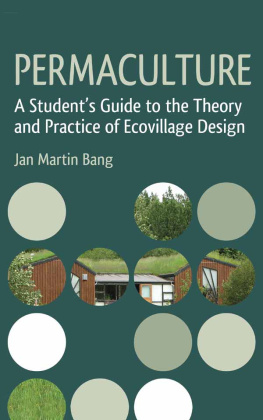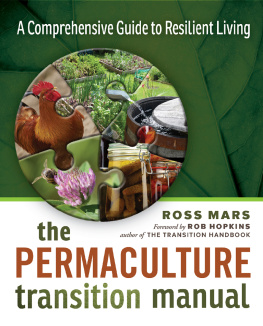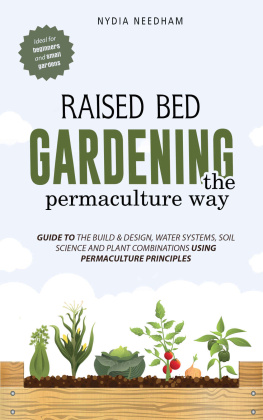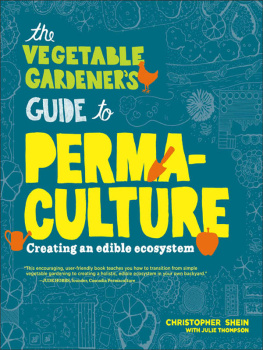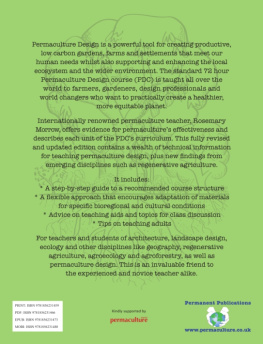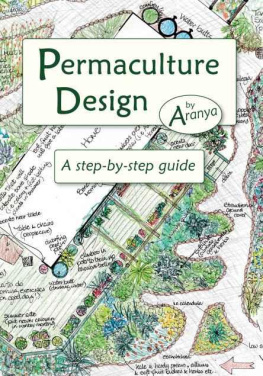Contents
Authors Foreword
It is now a couple of decades since the Global Ecovillage Network was launched at Findhorn, and the idea of Ecovillages has spread throughout the world. During this time the Ecovillage idea has been transformed according to the contexts in which it has found itself, so Ecovillages in Senegal look very different from Ecovillages in Northern Europe. A multitude of training programmes, seminars and courses have evolved to support people who are inspired by the idea. These have also evolved according to circumstance, context and the individuals involved.
However much these initiatives might differ from place to place, there are certain patterns and principles they all have in common.
First of all, change comes from within each individual, so here we have a common starting point. Our thinking patterns, which have created a world with existential problems of climate, pollution, economic meltdown and social conflicts leading to violence and war, need to change to patterns that will allow us to live in harmony with each other, and with our planet.
Secondly, we need a multitude of tools, technical, social and spiritual, in order to manifest this new thinking into concrete realities in our world; buildings, gardens, farms, communities and social organisms.
Thirdly we need to find partners with whom we can create larger realities. It would be a mistake to think that Permaculture or Ecovillage building is the only way to save the world; both mistaken and arrogant. Our way into a sustainable future is a broad path, indeed several parallel paths, all leading in more or less the same direction. So we need to reach out to biodynamic farmers, to Community Supported Agriculture projects, to environmental builders and ecological designers, to natural doctors and healers, to all who share the new paradigm.
This book is based on my experience in teaching Permaculture and Ecovillage design in Northern Europe and the Middle East for two decades. I am struck by the wide differences between Iceland and Palestine, between Latvia and the United Kingdom, and between Norway and Israel. The book arose out of two ideas. The first was that my first book, Ecovillages, is now ten years old, and much water has passed under the bridge since then, certainly in my personal story, and I have learnt a great deal from teaching in new places. Secondly, I have been highly inspired by the publication of The 4 Keys by the Gaia Education group, a series of texts designed to be used by participants in the international Ecovillage Design Education courses. I have been teaching the Permaculture Design Course, sometimes angled for those wanting to contribute to Ecovillage building, but more often to design their way to a more sustainable lifestyle and culture. It seemed to me appropriate to bring the ideas from these books into concrete teaching and learning situations.
This is not simply an academic study. I have tried to make the subject accessible to all, and have included many bits of advice gleaned from years of teaching. Some of these appear as exercises that can be done as a group, working on the ideas presented in the various chapters. These are tried and tested exercises that I use when I teach, and have been found to be very helpful. In the evaluations we carry out at the end of all courses, I have found that these exercises score highly.
My thanks go first to the team at Floris Books, Christian Maclean, Katy Lockwood-Holmes, to Leah McDowell for her inspiring cover design and especially to Christopher Moore for his tremendous help in getting my chaotic manuscript into its final shape. It is now a decade since we started working together, this is our fifth book and I could not wish for a more supportive and cooperative team to publish with.
Thanks also to Hildur and Ross Jackson, Albert Bates, May East and Frederica Miller for conversations, support and many fruitful ideas. Out of these conversations came the idea that Kosha Joubert, a leading figure in the Global Ecovillage Network, would contribute to the book. So thank you, Kosha, for the following: the guest preface on Ecovillages in a Time of Transition; Dragon Dreaming with John Croft; Ecovillage Design Mandala and Transition to Resilience together with Robin Alfred at the end of the book, Appendices 1 to 3. My thanks also to many others who have helped along the way: Mike Kaplin, Cathrine Dolleris, Ann Ellsie Morger for her short account of Auroville, Laura Podoski for her photographs of Auroville, Chris Coates and Kristin Vala Ragnarsdottir.
My thanks also to my family and to the wider community of sbygda in Southern Norway where I live. You are providing me with a safe haven in an otherwise stormy and unpredictable world, a base for me to return to, and a fellowship that nurtures me. Special thanks also to our daughter-in-law Aline Fohre, and our daughter Sarah Bang, for permission to use photographs of Straw Bale building and from Kibbutz Lotan.
Ecovillages are offering solutions, and as such, are maintaining an honourable tradition that has been a feature of Western Civilisation for at least 2,500 years. I am proud to offer this book as a small contribution to this tradition, and hope that it will inspire and help more people to join us in exploring sustainable ways into the future.
Guest Preface
by Kosha Joubert
Ecovillages in a Time of Transition
In April 2014 the Intergovernmental Panel on Climate Change (IPCC) published the third part of a trilogy of reports compiled by thousands of the worlds most eminent scientists, giving the most accurate and up to date account of climate change. The first report, released in September 2013, showed that climate change was unequivocally caused by human activity. The second, published in March 2014, warned that the impact of global warming, from extreme weather patterns to reduced food production, posed a grave threat to humanity and could lead to wars and mass migration. The third draft report, published in April 2014 stated that the world must urgently switch to clean, renewable sources of energy.
Community-led responses to climate change are a necessary part of any whole system change towards resilient societies. Already in 2009, the vice-president of the IPCC, Mohan Munasinghe, speaking about the importance of the role of citizens in regard to climate protection, said: Change needs to come from the grassroots level, simply because the establishment moves only very slowly.
The Global Ecovillage Network (GEN), set up in 1995, is an umbrella organisation working to support the experimental creation and preservation of low impact lifestyles across the globe. GEN serves as an alliance between rural and urban, traditional and intentional communities, and encompasses communities with some of the lowest recorded per capita carbon footprints. Through the sharing of best-practice and innovative solutions, and the honouring of deep-rooted traditional knowledge and local cultures, GEN is creating a pool of wisdom for sustainable living on a global scale. GEN supports the paradigm of thinking globally while acting locally.
GEN-International works through five broad regional organisations: the Ecovillage Network of the North Americas (ENA), the Latin American Ecovillage Network (El Consejo de Asentamientos Sustentables de las Amricas / CASA), GEN Oceania and Asia (GENOA), GEN-Europe/Middle East (GEN-Europe), and GEN-Africa. These networks make visible the impressive work done by at least ten thousand communities on the ground in more than one hundred countries worldwide.

